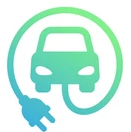The latest count of public EV chargers has swelled to 192,000. According to the U.S. Department of Energy, this number has doubled since the Biden administration took office and is continuing to grow at a rapid rate of 1,000 new chargers every week.
Along with the announcement comes the awarding of $521 million in grants to further expand charging access across the U.S. highway system. This includes 29 states, the District of Columbia, and two Federally Recognized Tribes—a total of 9,200 new EV charging ports.
“The Biden-Harris Administration has been clear about America leading the EV revolution, and thanks to the historic infrastructure package, we’re building a nationwide EV charger network to make sure all drivers have an accessible, reliable, and convenient way to charge their vehicles,” said U.S. Secretary of Transportation Pete Buttigieg. “The awards that we’re announcing today will build on this important work and will help ensure that the cost savings, health and climate benefits, and jobs of the EV future are secured for Americans across the country.”
The growth rate is rather impressive, actually. In mid-January, the U.S. government reported more than 169,000 chargers were deployed and online, meaning a 14% growth in just seven months. The number of chargers deployed weekly has also grown by 11%—from 900 to 1,000—during the same period.



I totally get the need for rural chargers. Nobody wants to go on a roadtrip and feel restricted.
But you also have the dual problem that people who live in apartment complexes, condo highrises, or older buildings without garages have no easy way to charge at home. They only get to use public chargers. Or those who commute long distances and would have to top off to make it back home. These are day-to-day issues in cities and high density areas.
You end up with long lines of people sitting in their cars, waiting their turn long into the night or at a far away charger just so they can use their vehicle the next day. These are people who will often swear they’ll switch to hybrids next. They also tell their family, friends, and neighbors who won’t go near EVs.
I could be wrong, but there are a lot more people (who don’t drive Teslas) having to deal with this day-to-day vs those going on occasional road-trips. Both are important, but if I was in charge of planning and budgets, I’d look first on making life easier for the most use-cases.
I’d argue this is a different problem. Those people eventually need a better option than public chargers (unless it’s street parking) and we need to work toward that. For apartments and condos with off street parking, that’s misplaced incentive, not a money problem. You can’t just throw money at building chargers but need to change the incentives so those condos, those apartments have an interest in providing chargers for their residents